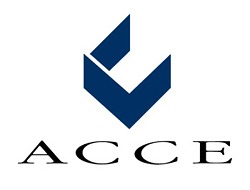
Sure, chambers advocate for their members. But are you doing it digitally, too? You should be.
Does the thought of advocacy bring smoky rooms and lobbyists in expensive suits to mind?
Not anymore.
The role of chambers in advocacy has always been clear: represent the voice of business, protect pro-growth policies, and build constructive relationships with policymakers. But today’s instantaneous information environment has changed dramatically—and chambers that continue relying solely on traditional lobbying, press releases, and policy breakfasts are at risk of becoming background noise in a crowded, distracted world.
The new rules of advocacy demand more than presence in the room. They require chambers to be digital communicators, agile responders, and relatable storytellers. As the speed of communication accelerates and attention spans shrink, chambers must rethink how they frame and deliver their public policy messages—both to legislators and to the communities they serve.
The Rise of Digital Advocacy
Today, social media headlines move faster than legislative calendars. So being digitally active is no longer a “nice-to-have.” It’s essential. Advocacy wins are increasingly shaped by public narratives—and those narratives are often formed online. Case in point, Trump using X as a messaging platform. From viral policy posts to influencer-driven campaigns, the digital arena has become a key battleground for public perception and political influence.
For chambers, this means retooling. The audience is no longer just the elected official. It’s the business owner on Instagram, the voter on LinkedIn, and the local journalist scanning X for trends. Chambers are increasingly realizing that to lead, they must engage at the speed and scale of modern media.
The Messaging Shift: From Policy Speak to People Speak
One of the most significant shifts in successful digital advocacy is tone. Traditional advocacy often speaks in legislation and acronyms—think “SB-425,” “workforce pipeline optimization,” or “regulatory relief.” While accurate, that language rarely sparks engagement from the average business owner or community member.
After all, who can keep all the bill numbers straight?
Instead, opt for clarity and relatability. What does the bill mean for them? Will it help keep their doors open longer? Will it make hiring easier? Will it reduce red tape and wasted time? Adopt a catchy nickname that speaks to what it does, not what order it was presented in the legislature.
The most effective chambers are translating policy into people’s terms. A zoning amendment isn’t just a code change—it’s the difference between a local coffee shop opening in three months or three years. A workforce funding package isn’t a budget line item—it’s the future of a business owner’s next hire.
Attention is the New Currency
In advocacy, the best message in the world is useless if no one sees it. The competition for attention has never been more fierce, and chambers that want to advocate effectively must also become savvy marketers of their priorities.
That starts with where your audience is and what they’re consuming. Short videos, compelling visuals, brief storytelling posts, and infographic summaries are more effective than 3-page legislative updates or dense white papers. For elected officials and constituents alike, content needs to be snackable and shareable.
After all, when was the last time you shared a five-page policy report on social media? We’re guessing never. But when did you share a smart cartoon or educational image post? Probably this week.
Creating short, snackable educational pieces doesn’t mean sacrificing substance. It means structuring information for digital delivery: leading with the “why,” using everyday language, and designing for mobile-first consumption. Your advocacy content should work just as well in an Instagram caption or TikTok clip as it does in a committee hearing. (Actually, better. There are more people on those social platforms.)
Engagement Over Exposure
Many chambers make the mistake of thinking “posting about an issue” is the same as doing digital advocacy. It’s not. True advocacy invites engagement. It sparks conversation. It mobilizes.
Instead of simply announcing a chamber-supported bill, ask members how that issue affects them. Share a short video of a business leader explaining their challenges. Invite others to comment or submit their own stories. The more participatory the campaign, the more visible—and persuasive—it becomes.
In this way, chambers can amplify not just their voice but the voices of their members too. That collective testimony, shared digitally and strategically, becomes a powerful tool to influence opinion and drive legislative change.
Legislators Are Listening
It’s easy to assume digital advocacy is just for the public-facing side of chamber work, but don’t underestimate how many elected officials are watching. Many local, state, and even federal representatives are actively monitoring their social media mentions, watching who tags them, and paying attention to which stories are gaining traction online.
When your chamber shares member perspectives, tags the right offices, and creates visually compelling content tied to legislation, you’re not just educating the public—you’re also reinforcing your chamber’s role as a trusted, grassroots-informed voice of business.
Advocacy That Scales
One of the best parts of digital advocacy is its scalability. Chambers don’t need to double their budgets to double their impact—they just need to think creatively about content and strategically about platforms.
What used to require a press conference or op-ed can now be done in a well-produced Reel or LinkedIn post. Instead of asking members to attend in-person meetings, chambers can:
- host live Q&As
- run polls,
- provide templated messages that members can personalize and send to their representatives with a click
Even small chambers can have big voices when they empower their members with the right tools and tell the right stories in the right ways.
The Future Is Already Here
Policies can rise or fail based on the strength of a tweet or the reach of a video. It’s time to invest in digital skills (or AI), hire or train staff who understand social media strategy, and make content creation a regular part of advocacy—not an afterthought.
The stakes are high. Economic development, regulatory decisions, business recovery efforts, and infrastructure investments are all shaped by advocacy.
Visibility equals viability.
Chambers that embrace the new rules—authentic storytelling, fast feedback loops, and digital amplification—won’t just survive the shift. They’ll lead it.
Because in a distracted world, it’s not the loudest voice that wins. It’s the one that resonates.

